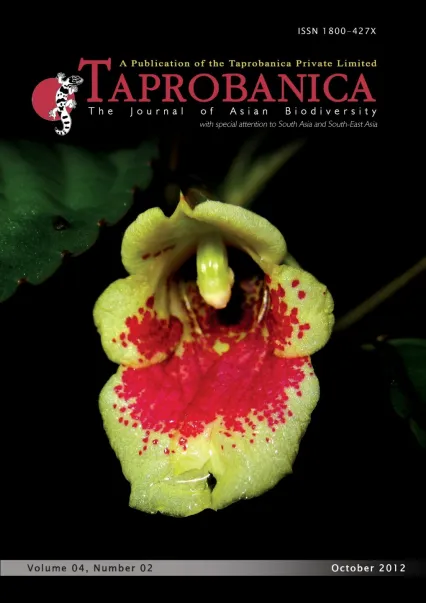

v4i2.76
Volume 4 | Number 2 | November 2012
Essay
ISSN: 1800-427X (print)
eISSN: 1800-427X (online)
DOI:10.47605/tapro.v4i2.76
Submitted date: 15 December 2011
Accepted date: 24 September 2012
Published date: 14 November 2012
Pp. 92–102.
Historical land-use patterns in relation to conservation strategies for the Riverstone area, the Knuckles massif, Sri Lanka: insights gained from the recovery of anuran communities
Senarathge R. Weerawardhena* & Anthony P. Russell
*E-mail: zoosrw@kln.ac.lk
Agriculture on the Indian sub-continent dates back to the fourth and third millennia BC, but only in more recent times did its intensity escalate in a major way. During the colonial era, the British established that the hilly areas of Sri Lanka were suitable for the rearing of coffee (Coffea arabica), for which much of the arable land of the island was extensively cultivated. Later, however, resulting from the severe impact of “Coffee Rust,” caused by the fungus Hemileia vastatrix, the coffee industry of Sri Lanka declined dramatically. Former coffee plantations were abandoned, but are still distinguishable as damaged areas. The truncation of coffee growing on the island created vacant room for another cash-crop.
Section Editor: Lee E. Harding
eISSN: 1800-427X (online)
DOI:10.47605/tapro.v4i2.76
Submitted date: 15 December 2011
Accepted date: 24 September 2012
Published date: 14 November 2012
Pp. 92–102.
Historical land-use patterns in relation to conservation strategies for the Riverstone area, the Knuckles massif, Sri Lanka: insights gained from the recovery of anuran communities
Senarathge R. Weerawardhena* & Anthony P. Russell
*E-mail: zoosrw@kln.ac.lk
Agriculture on the Indian sub-continent dates back to the fourth and third millennia BC, but only in more recent times did its intensity escalate in a major way. During the colonial era, the British established that the hilly areas of Sri Lanka were suitable for the rearing of coffee (Coffea arabica), for which much of the arable land of the island was extensively cultivated. Later, however, resulting from the severe impact of “Coffee Rust,” caused by the fungus Hemileia vastatrix, the coffee industry of Sri Lanka declined dramatically. Former coffee plantations were abandoned, but are still distinguishable as damaged areas. The truncation of coffee growing on the island created vacant room for another cash-crop.
Section Editor: Lee E. Harding
- List of Articles & Contents





